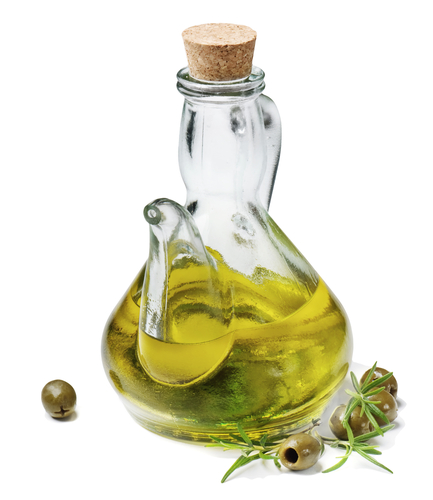Olive Oil – Liquid Gold
 When November rolls around each year, many Italians begin to look forward to the annual olive harvest. Called liquid gold by many throughout history, olive oil has played an important part in the lives of the Mediterranean people, and Italian cuisine would just not be the same without it. Today, olive oil is the basis for much of Italian cooking; used in sauces, sautéing, salad dressings, grilling and even as a condiment drizzled over dishes at the table.
When November rolls around each year, many Italians begin to look forward to the annual olive harvest. Called liquid gold by many throughout history, olive oil has played an important part in the lives of the Mediterranean people, and Italian cuisine would just not be the same without it. Today, olive oil is the basis for much of Italian cooking; used in sauces, sautéing, salad dressings, grilling and even as a condiment drizzled over dishes at the table.
Well respected for their full, fruity flavors, Italian extra virgin olive oils are considered to be some of the best in the world, particularly those from Tuscany and Abruzzi, although I have tasted oils from Puglia and Umbria that I found delicious as well. In Italy the first olive grove was cultivated in the south around 1000 BC.
Shortly after, the Romans began bringing the practice of olive tree cultivation to the rest of Italy giving oil an important commercial value for trading. In 1500 AD the Tuscan hills became even more covered with Olive groves after the Medici Family (The Granduca Cosimo I) gave land to any family who wanted to grow olive trees. An olive tree can live for over 200 years and after a tree dies new branches will begin to bud in the same place. On our recent trip to Puglia this summer, we were amazed to see an olive tree that was said to be almost 1,000 years old!
La Cucina Italiana magazine reports that extra virgin olive oil is the most digestible of all the edible fats. It also helps to assimilate vitamins A, D and K, helps bile, liver and intestinal functions, as well as helping to assimilate vitamins A, D and K. The characteristics of specific olive oils are determined by many factors, including the variety of olive, climate, growing conditions, harvesting methods as well as the method used for pressing.
Olive oil differs from other cooking oils in that it is the only oil that has a limitless variety of flavors to choose from. They run the gamut from light and fruity, to robust and full-flavored, to buttery and delicate. It is said you should choose your olive much like you would choose your wine. It should be warmed slightly to allow the full flavor to evolve before testing.
The following are the important characteristics one should observe to judge olive oil.
Smell: First smell the oil to judge the aroma. It should be a clean olive smell with no trace of mustiness. Sometimes you may detect a grassiness or fruity odor. We recently bought a bottle of olive oil from Trevi that was the first of this season’s harvest and it had a vibrant green color and an amazing flavor with a hint of grass. You could actually smell the fact that the oil had been harvested just the week before the aroma was so clean and fresh.
Taste: Take a spoonful in your mouth, and suck in a little air as you would taste wine. You should taste a fresh olive taste, with no metallic aftertaste which could indicate your oil is rancid. Words that should come to mind would be earthy, zesty, nutty, grassy or buttery. The oil should lightly coat your palate, not lie heavy like a coat of paint.
There should be no aftertaste with a good oil, unless it is a light peppery taste that some young oils may have which will eventually fade with time. Some first pressed oils have an aftertaste that is almost a bit sharp, but delicious none the less.
Color: This really isn’t the great indicator of the quality of olive oil as we have come to believe. Many factors affect the color, including the type of olive used, whether leaves were mixed in with the pressing, and even whether additives were added to “fake” the color. I personally feel taste is a much more important criteria to a really quality olive oil but in general a good oil will have a nice green color.
Before choosing your oil, you must also first determine how you want to use it. Naturally the more flavorful young extra virgin oils are going to be more expensive, so save these to be used as a condiment at the table, or to lightly dress a dish after preparation. These oils have a low smoking point so are not really suitable for frying.
Choose the plain, basic olive oil for cooking. I personally keep my best olive oil for drizzling on prepared dishes and use less expensive oils for everyday cooking, or in salad dressings.
Considerations for storing your oil should begin at the store. Stay away from clear bottles that have been left sitting out in the light. Heat and light are the worst enemies to olive oil, so once you get your oil home, try and store it in a cool, dark cupboard. Try and purchase olive oil within three years of it’s harvest date, although the very young extra virgin will have a shorter shelf life than that. If you have a good extra virgin olive oil that you wish to use in a recipe, choose a simple one that allows the full flavor of the oil to shine.
I hope I gave you a better understanding of the importance of olive oil, and how to choose the best one for your needs.
Deborah Mele